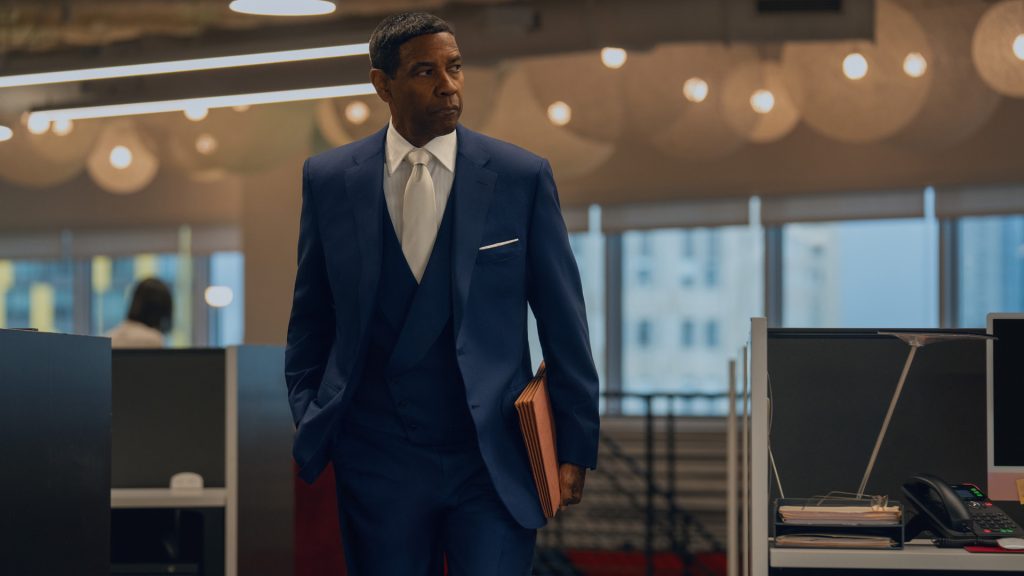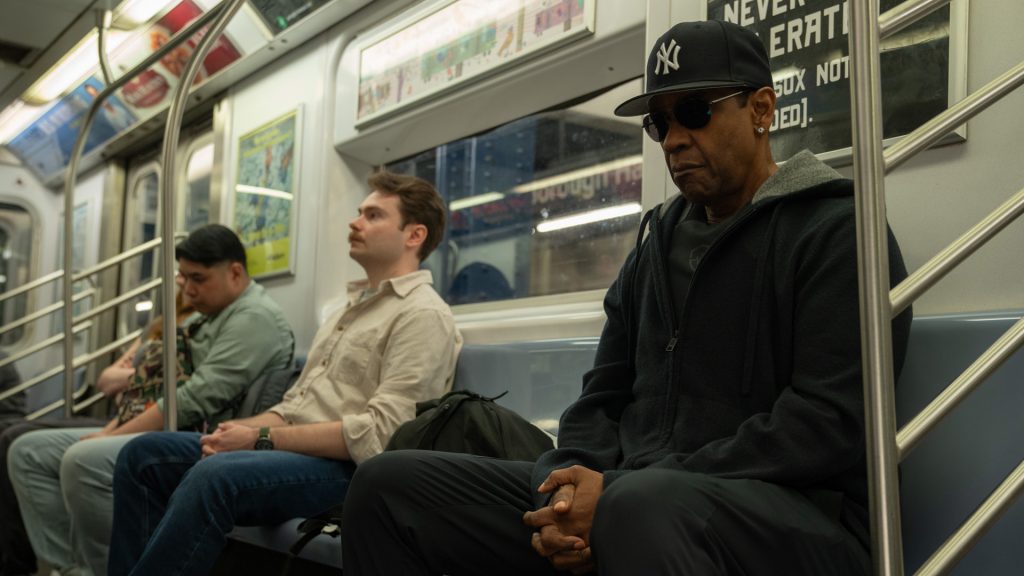
Spike Lee’s Highest 2 Lowest reworks Ed McBain’s King’s Ransom through a New York prism and keeps Akira Kurosawa’s moral heartbeat close at hand. The surface story is simple: David King (Denzel Washington), a music-industry tycoon, faces a kidnapping that forces him to weigh money, reputation, and conscience. Lee stages this as a moral geography—glittering rooftops give way to subway shadows—so the city itself becomes the instrument of judgment.
The Spike–Denzel reunion is the film’s marquee promise. Their shorthand still sparks: Denzel fills the frame with the same economy of gesture and vocal control that has defined many of his roles. He’s convincingly regal as a mogul—every tilt of the head, every clipped line reads like business logic—but honest verdict: this is strong, professional Denzel, not a performance that reinvents him. It holds the movie up when other parts wobble, yet it never surprises the way some hoped.
Jeffrey Wright, expected as the moral counterweight, is the film’s underuse. He does what’s given—quiet, competent work—but the script mostly keeps him on the margins. He’s never bad, just not stretched; his presence hints at something deeper that the screenplay refuses to let bloom. Meanwhile, A$AP Rocky injects kinetic life into key sequences and functions as the film’s unexpected magnetic charge. Ilfenesh Hadera grounds the domestic moments with steadiness, and Ice Spice’s cameo reads as a musical punctuation more than a dramatic fulcrum.
Musically, Lee courts spectacle and risk. The score wants to be many things—noir orchestral, nightclub pulse, musical saga—and those shifts destabilize the film. Early on the music alienates; by the second act it grows on you in odd, slow ways. Still, the inconsistent sound design frequently fights the frame, sometimes robbing actors of the space they need to land emotionally.

And the skyline: yes, the aerials are gorgeous, and the idea—show New York from the “highest,” then force a fall to the “lowest”—is a tidy cinematic conceit. But Lee leans on it again and again until the metaphor loses weight. Those first two or three rooftop sequences cut clean; the repeated return to similar vistas becomes insistence rather than revelation. In short: beautiful, then repetitive, then slightly exhausted.
Mel Gibson’s Ransom (1996) is the measuring stick for a certain kind of hostage thriller: taut, action-forward, and surgically focused on suspense and consequence. It keeps stakes immediate and pacing razor-sharp; every scene advances the clock and the tension. Highest 2 Lowest is almost the opposite ambition. Where Ransom chooses muscle and propulsion, Lee opts for allegory, mood, and visual commentary. That choice gives the film moments of visual and thematic potency, but it also weakens its grip as a thriller. If you wanted the pulse of Ransom—relentless, suspense-first thrill—you’ll find Lee’s version more reflective and, at times, frustratingly leisurely. The result: Ransom satisfies as a pure suspense engine; Lee’s film promises more layers but sometimes sacrifices the immediate suspense that keeps an audience on edge.
Highest 2 Lowest is ambitious, occasionally thrilling, and visually ambitious—yet uneven where it matters. It gives you moments to admire and moments that frustrate; by the time it finishes, you’ll feel the irony of its title.
Rating: 6/10
★★★★★★☆☆☆☆
